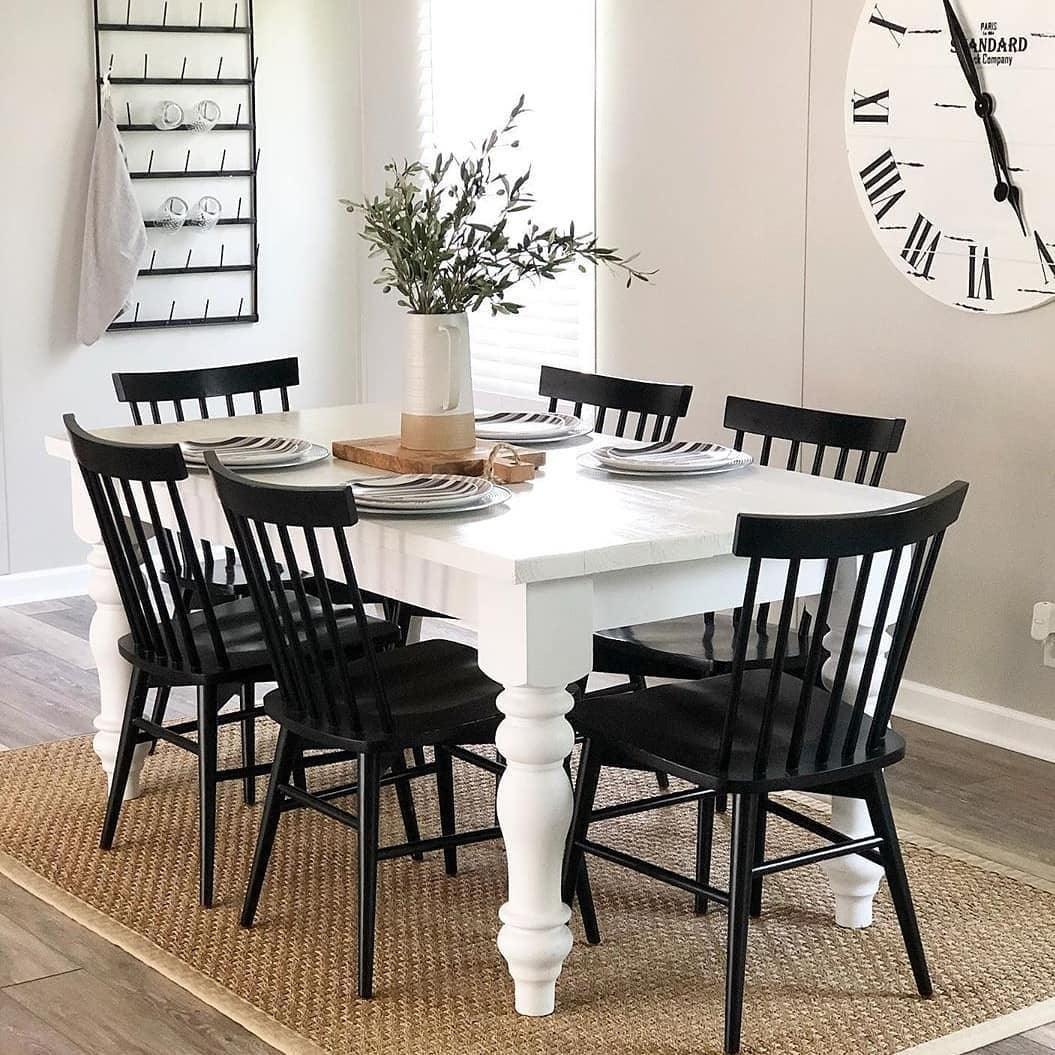Tips for Installing Dining Room Table Legs for a Modern Look
Tips for Installing Dining Room Table Legs for a Modern Look
Blog Article
From Traditional to Modern: Locate the Suitable Dining-room Table Legs for Your Design
While timeless layouts such as cabriole and turned legs stimulate a feeling of timeless class, contemporary designs like hairpin and geometric alternatives provide an opportunity for striking aesthetic interest. As you think about these components, the inquiry stays: just how can you seamlessly integrate these diverse leg styles to produce an unified eating experience?
Recognizing Table Leg Styles
The range of dining space table leg styles can significantly affect both the aesthetic appeals and capability of the room. Each leg design contributes special aesthetic aspects and functional functions, dealing with diverse style choices and usage demands. Understanding these styles is important for picking the ideal dining table that aligns with your overall interior decoration vision.
For example, conical legs use a clean, classic look that can enhance an area's style, while pedestal bases provide security and take full advantage of legroom, making them optimal for smaller rooms. Hairpin legs, a characteristic of mid-century modern layout, introduce an industrial panache, permitting a ventilated, open feel. Trestle legs evoke rustic appeal, supplying robust support and a sense of eternity.
Wood legs can bring heat and texture, whereas steel alternatives frequently share a smooth, modern ambiance. Ultimately, understanding table leg designs is crucial for producing a natural dining location that mirrors personal style while making sure practicality and comfort.
Traditional Table Leg Options
When choosing eating area table legs, traditional options commonly symbolize classic elegance and craftsmanship. These designs show an abundant heritage and a dedication to quality, making them perfect for those that value classic aesthetic appeals.
Among the most renowned standard leg designs is the cabriole leg, identified by its elegant bent shape. This design typically includes ornamental makings and is most frequently located in Queen Anne and Chippendale furnishings. Another preferred alternative is the transformed leg, which boasts a collection of smooth, rounded shapes that offer a classic appearance while preserving stability.
Furthermore, the straight leg, while easy, provides a strong and unadorned structure that can blend perfectly with a variety of tabletop styles. For those attracted to ornate detailing, claw-and-ball feet legs stimulate a feeling of majesty and can work as a sensational prime focus in any kind of eating area.
Lastly, stand bases, although not purely legs, give a different standard choice that allows for enough legroom and can be magnificently sculpted. Each of these conventional leg styles adds to the general atmosphere of a dining-room, weding function with visual charm.

Modern Table Leg Designs
Modern table leg layouts provide a varied variety of designs that highlight innovative products and tidy lines. These styles frequently prioritize capability while serving as striking centerpieces within a dining room. Minimalist visual appeals prevail, with legs crafted from products such as steel, glass, and engineered timber, which add to a contemporary and ventilated feel.
One prominent style is the hairpin leg, defined by its slim, tapered structure that gives stability without frustrating the table top (dining room table legs). This style is commonly discovered in mid-century modern furnishings and can effortlessly match various our website table forms. An additional trend is the usage of geometric shapes, where legs might take on angular or asymmetrical forms, adding visual rate of interest and a touch of virtuosity

Blending Styles for Distinct Areas
Commonly, house owners seek to produce distinct dining spaces that reflect their individual design by blending various design elements. This approach permits the unification of varied appearances, resulting in an unified yet distinct atmosphere. Matching a rustic wooden table with sleek, modern steel legs can create an attractive contrast that elevates the space's overall allure.
Furthermore, integrating vintage table legs with contemporary tabletops can evoke a sense of background while maintaining a modern-day sensibility. Such combinations not just showcase private taste however also encourage creative thinking, enabling homeowners to curate an area that really feels both personal and welcoming.
Color plays an essential duty in this blending process; selecting table legs that enhance or contrast with the existing color scheme can boost aesthetic passion. Whitewashed legs can soften the daring of a dark table surface, developing a balanced aesthetic.
Tips for Selecting the Right Legs
Picking the right table legs check this is vital for attaining both capability and visual appeal in your dining room. Begin by thinking about the general style of your space. Standard settings profit from legs that include intricate carvings or transformed designs, while contemporary spaces may Related Site require smooth, minimal designs.
Following, assess the elevation and security of the legs. dining room table legs. Standard dining tables range between 28 to 30 inches in elevation, so guarantee the legs match this dimension for convenience. In addition, robust products, such as hardwood or steel, can improve stability and long life
Assess the leg form also-- choices include right, tapered, or stand designs. Straight legs use a timeless appearance, while conical legs can add a touch of beauty. Pedestal bases offer adequate legroom and are ideal for smaller spaces.
Conclusion
In summary, picking the excellent dining room table legs calls for cautious consideration of both typical and contemporary designs. By integrating leg style, elevation, and material with the total décor, a natural and inviting ambience can be accomplished.
The variety of eating room table leg designs can dramatically influence both the aesthetic appeals and functionality of the room. Inevitably, understanding table leg designs is necessary for creating a natural eating area that mirrors individual style while ensuring practicality and convenience.One of the most renowned standard leg designs is the cabriole leg, identified by its graceful bent shape. Straight legs use a classic appearance, while conical legs can add a touch of sophistication.In summary, selecting the optimal dining area table legs requires cautious consideration of both traditional and contemporary styles.
Report this page